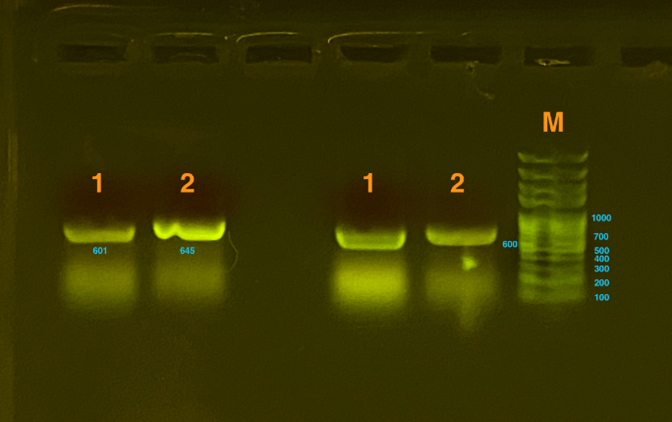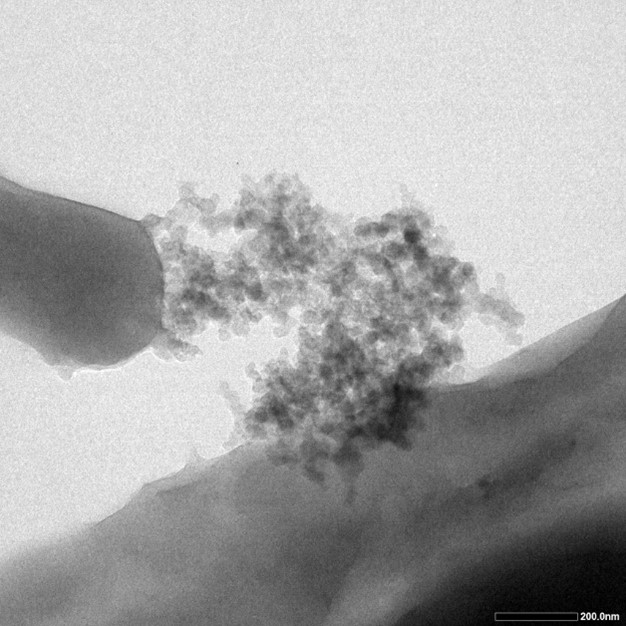Difference between revisions of "Part:BBa K4090004"
| Line 7: | Line 7: | ||
<!-- Add more about the biology of this part here --> | <!-- Add more about the biology of this part here --> | ||
==Data== | ==Data== | ||
| + | [[File:T--SDSZ_China--result_1-2parts.png|700px|thumb|center|Fig.1]] | ||
| + | According to Fig.1, all the fragments designed have been successfully made, including S1&S2, which are Silicatein combined with INP, and P1&P2, which are S010_pET28b-csgA-linker-mfp5-7His(pET). | ||
| + | [[File:T--SDSZ China--result 1-4parts.png|700px|thumb|center|Fig.2]] | ||
| + | Fig.2 represents the results of gel electrophoresis to test the fragment after Gibson Assembly. The length is about 600bp, which, together with the results from sequencing, indicates a positive outcome. | ||
| + | [[File:T--SDSZ China--result 1-6parts.png|700px|thumb|center|Fig.3]] | ||
| + | Fig.3 represents qualitative OD values, showing that there is sufficient amount of silicatein produced, since: | ||
| + | •Both NC Control are darker (NC1 remain as yellow which indicates that it needs MORE NaOH to turn blue, it contains more acids). | ||
| + | •Both silicatein mixture (with / without homogenization) have higher OD810nm, meaning that there are more bacteria inside the test tube (the solution is thicker / not as clear as NCs). | ||
| + | [[File:T--SDSZ China--result 1-7parts.jpeg|700px|thumb|center|Fig.4]] | ||
| + | Fig.4 shows the results from TEM testing. Dark proportions represent silicon dioxide produced on the surface of cells. | ||
| + | [[File:T--SDSZ China--result 1-3parts.png|700px|thumb|center|Fig.5]] | ||
| + | |||
<!-- --> | <!-- --> | ||
Revision as of 11:04, 17 October 2021
Silicatein
Silicatein is a kind of mineralized protein that helps to form silicon dioxide
Data
According to Fig.1, all the fragments designed have been successfully made, including S1&S2, which are Silicatein combined with INP, and P1&P2, which are S010_pET28b-csgA-linker-mfp5-7His(pET).
Fig.2 represents the results of gel electrophoresis to test the fragment after Gibson Assembly. The length is about 600bp, which, together with the results from sequencing, indicates a positive outcome.
Fig.3 represents qualitative OD values, showing that there is sufficient amount of silicatein produced, since: •Both NC Control are darker (NC1 remain as yellow which indicates that it needs MORE NaOH to turn blue, it contains more acids). •Both silicatein mixture (with / without homogenization) have higher OD810nm, meaning that there are more bacteria inside the test tube (the solution is thicker / not as clear as NCs).
Fig.4 shows the results from TEM testing. Dark proportions represent silicon dioxide produced on the surface of cells.
Sequence and Features
- 10COMPATIBLE WITH RFC[10]
- 12INCOMPATIBLE WITH RFC[12]Illegal NheI site found at 664
- 21COMPATIBLE WITH RFC[21]
- 23COMPATIBLE WITH RFC[23]
- 25COMPATIBLE WITH RFC[25]
- 1000COMPATIBLE WITH RFC[1000]
References
[1] Hale, L. V., Ma, Y. F. & Santerre, R. F. Semi-quantitative fuorescence analysis of calcein binding as a measurement of in vitro mineralization. Calcif. Tissue Int. 67, 80-84(2000). Ramachandran S K.
[2] Dick J, Windt W D, Graef B D, et al. Bio-deposition of a calcium carbonate layer on degraded limestone by Bacillus species[J]. Biodegradation, 2016(4): 357-367.
[3] Qian C X, Chen H C, Ren L F, et al. Self-healing of early age cracks in cement-based materials by mineralization of carbonic anhydrase microorganism[J]. Frontiers in Microbiology, 2015(6): 1-9.





